IN THE SEASIDE PART OF SUBURBIA
Ten days ago, on the 9th of September, I had to do some stuff in the city. Visit some people and buy a thing or two in the shopping mall. When everything was done, it was time to stop in some quiet neighborhood, take a relaxing walk, and a bunch of photographs along the way. This is a quick report about those moments at the edge of the city.
The city I'm talking about is Pula, the nearest one to my hometown and the biggest city on this peninsula called Istra. This time I parked my car near the sea. In a suburban neighborhood with a harbor in the long inlet that looks a bit like a large, quiet river.
I passed by these prickly pears that grew in between the parking lot and the sea ...
... and continued straight along the edge of the shallow water of the bay.
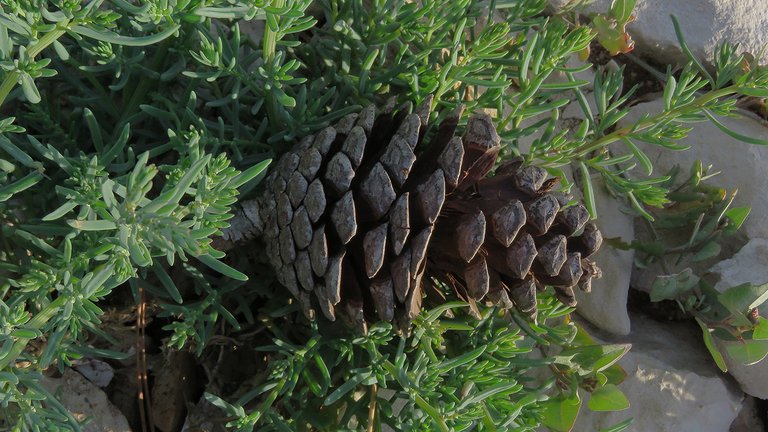
Twenty or thirty meters further, I stopped to photograph this pine cone that ended up in the intertidal zone. Only a couple of meters from there, in the nearest grass ...
... I found many little snails scattered across the vegetation. They were sealed inside their shells, some in clusters, others alone. The name of this species is Theba pisana.
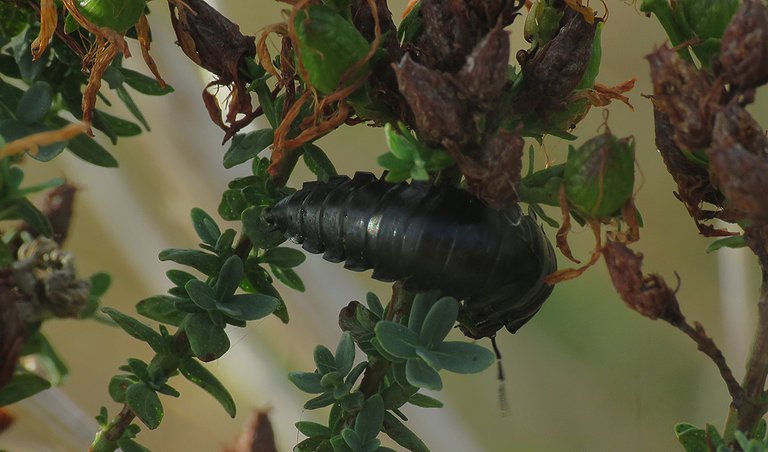
While observing the snails, I noticed this black larva that was exploring the area. It was moving very fast so I was able to take only one, not-very-good photograph. At one point the insect attacked the snail and chewed its way into the shell in a few seconds. It all happened very fast. When I got everything ready for a shot, the larva was inside the shell. I touched the shell, and the larva didn't come out nor entered deeper in ...
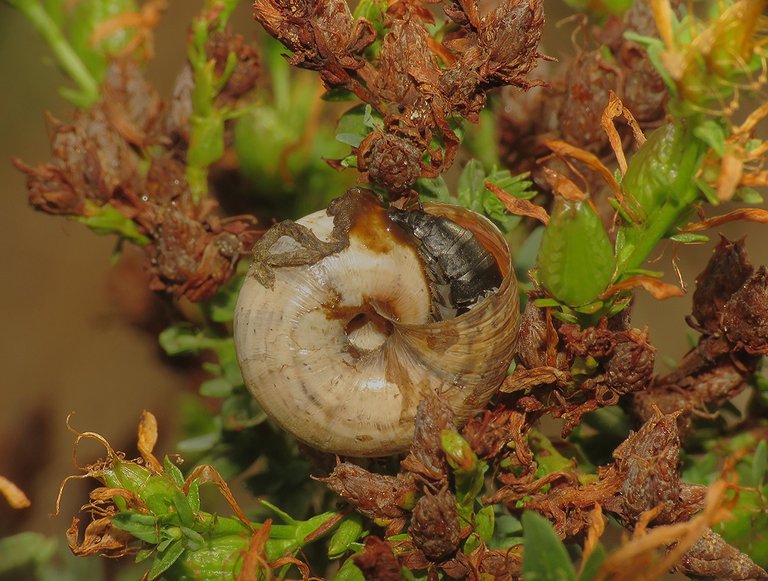
... so I picked the snail and put it in a position in which will be easier to photograph the scene.
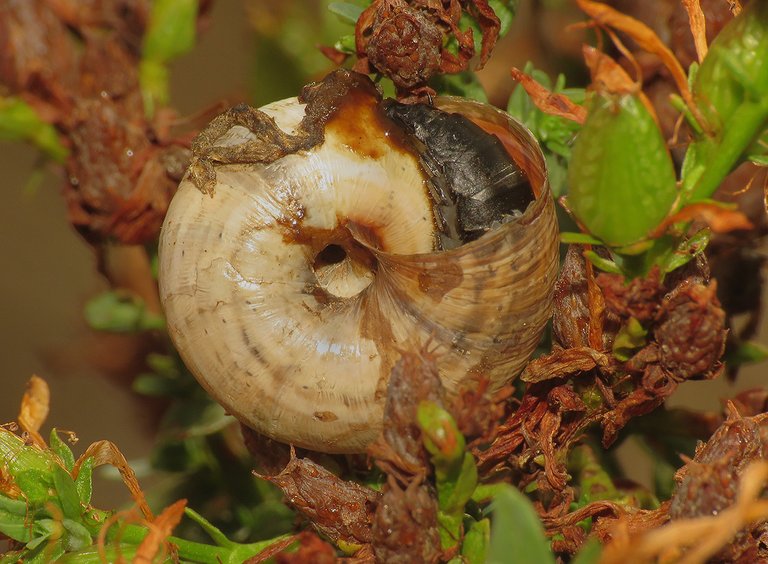
In these two shots, you can see only the rear end of the larva, while the rest of its body is inside the spiral shell.
I spent almost an hour observing the snails and everything that was going on around them, and at one point ...
... I got lucky. The larva shown in these three photographs was exiting the shell.
Here you can take a good look at the insect in action. This is the larval stage of Silpha laevigata, a carrion beetle from the Silphidae family. The adults feed on snails and carcasses, while the larvae prefer a snail-only diet. Both, the larvae and the adults can easily penetrate the shell, but their technique is slightly different. While the adults often must destroy part of the shell with their strong mandibles to get to the meat, the elongated, elastic larvae can enter more elegantly, and eat the helpless mollusk while being hidden and protected inside its shell.
In this old photograph, taken in the summer of 2014, you can take a look at the adult beetle in the palm of my hand. The adults are much easier to photograph.
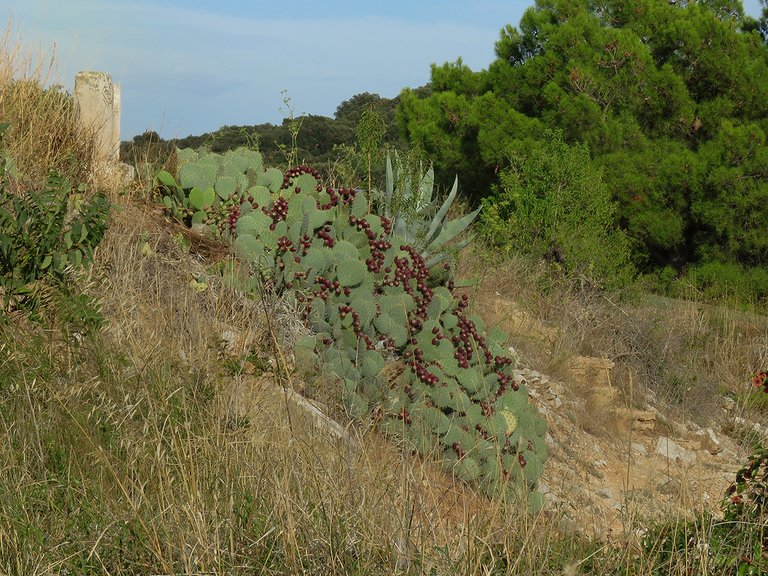
When I was done photographing the snails and their predators, I zoomed in on the cacti that you saw at the beginning of this post. After taking this long-distance shot, I decided to come closer and explore a bit around that thorny plant, but ...
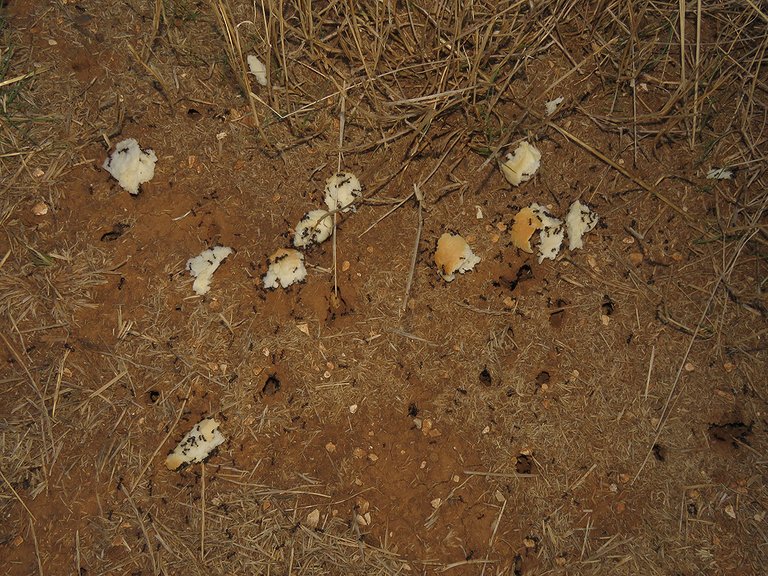
... I had to stop along the way because I noticed chunks of bread in the middle of the path.
Someone left the bread near the entrances to the colony ...
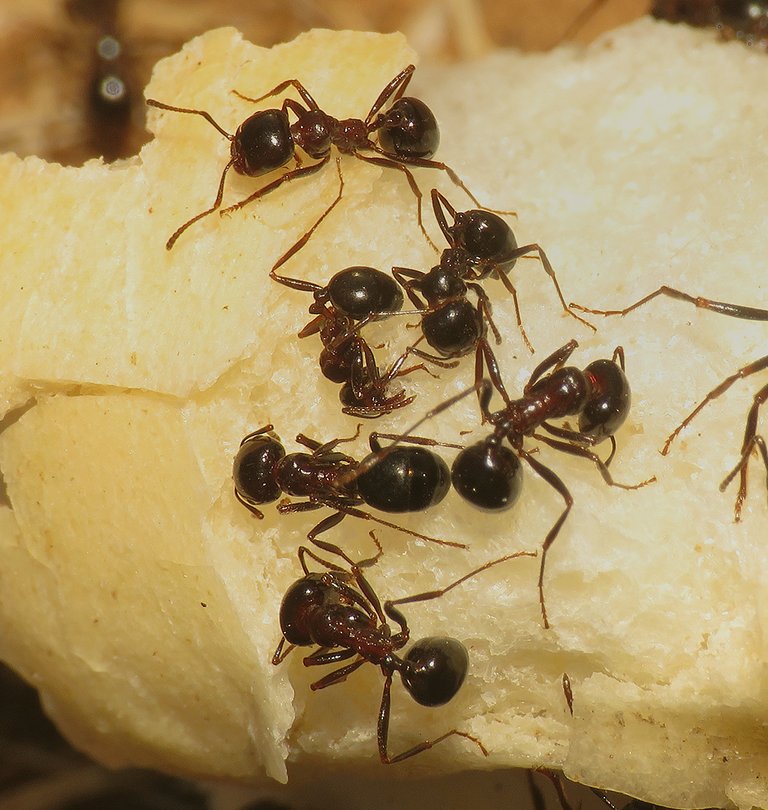
... and the ants came to dismantle the free meal ...
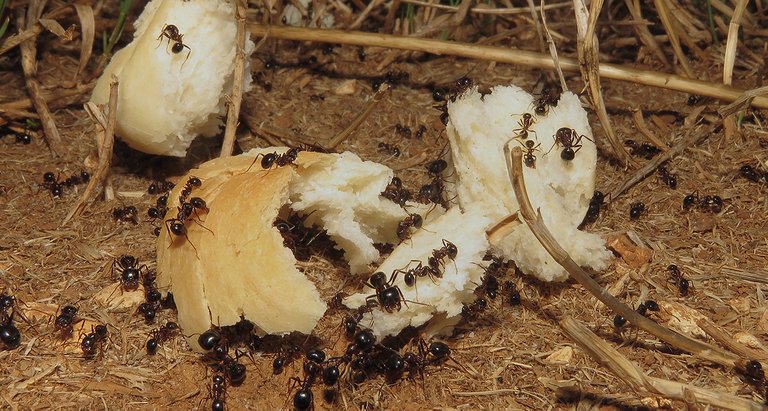
... and bring it underground in much smaller pieces.
Messor wasmanni is the name of the species.
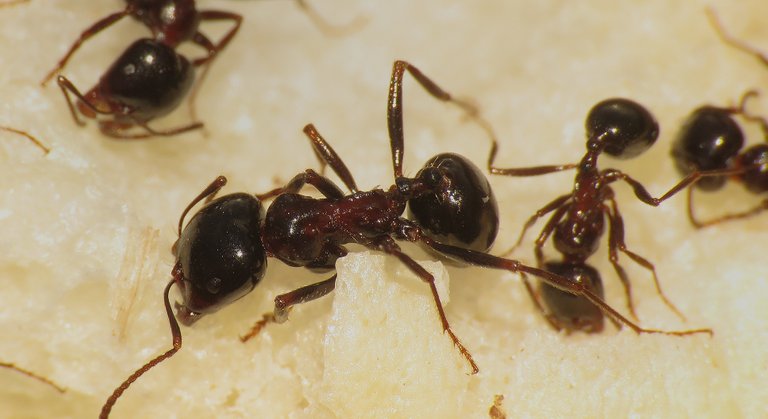
These are grain-harvesting ants. They feed on seeds produced by various types of grass that grow in the area.
In this case, the harvesting was done by humans, and the ants are enjoying the weird baked thing made of ground grains.
The foraging behavior of this species is often influenced by the weather. They get very active when the humidity is high, and create long trails that lead from the rich sources of food to their underground base.
After taking this fairly wide shot in which you can see a bit of the landscape while the ants are still recognizable, especially if you enlarge the picture by clicking on it, I continued my walk ...
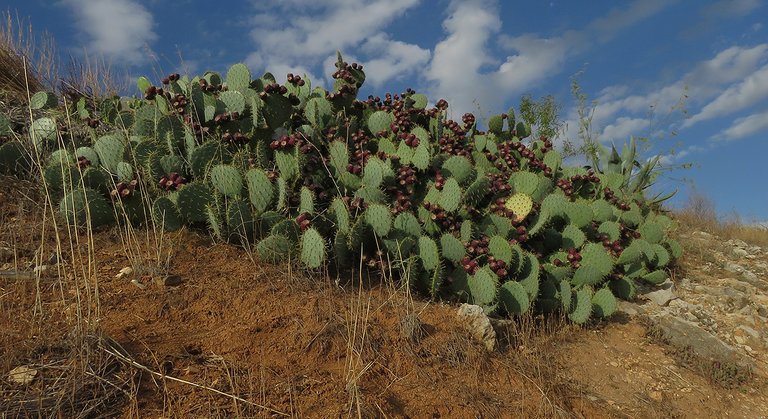
... directed toward the dense growth of cacti.
The Opuntia ficus-indica was brought to Europe very early after the old world became aware of the new lands across the Atlantic.
The plant is native to central Mexico, but it has been firmly established in the Mediterranean areas with suitable climates.
The Opuntia ficus-indica has been domesticated long ago. Don't know when exactly or approximately. All the internet sources state only that it was long ago. Ok. I found out a bit more. A minute or two ago. One article states that it has been used as food for at least 9000 years. Now, this was definitively very long ago.
After a bit of sniffing around the cacti, I drove back to the center of the city where I visited a few more places, talked with some people, and then ...
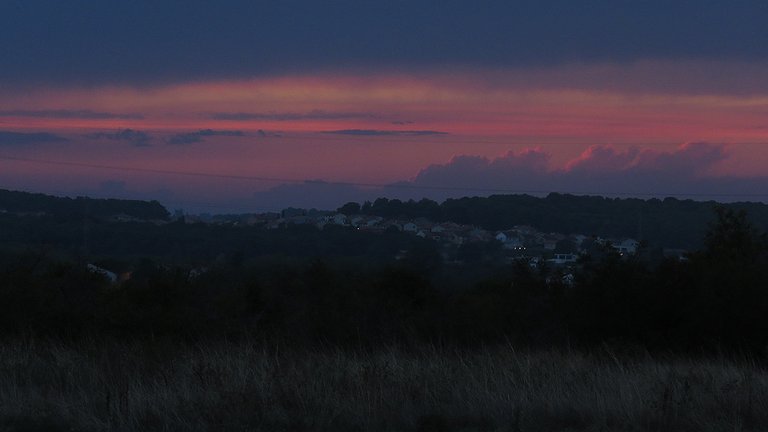
... as it was getting dark ...
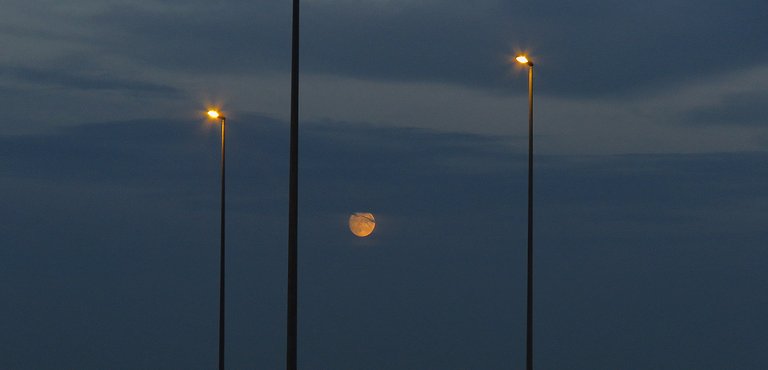
... I was driving back home.
This last series of dusky photographs were taken halfway between the city and my hometown ...
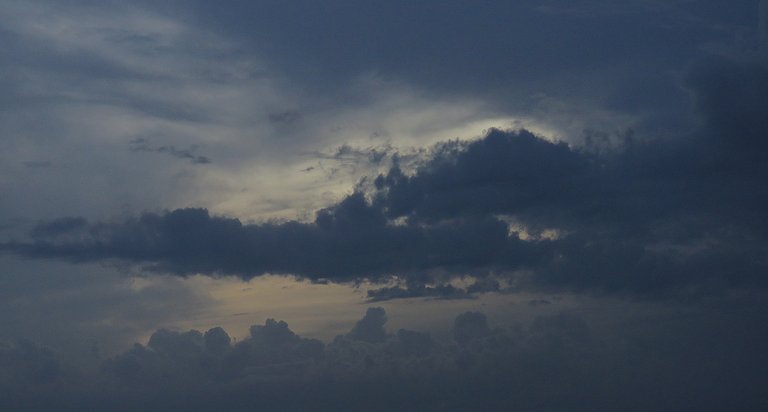
... when I stopped to take a good look at the beautiful evening sky.
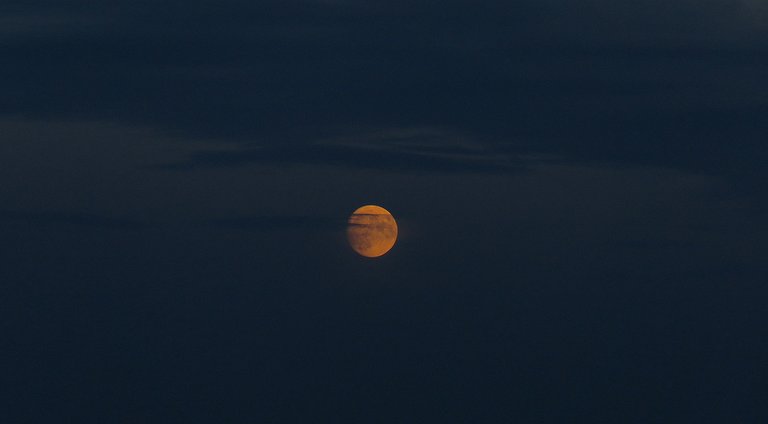
The moon was almost full ...
... and it was a joy to watch.
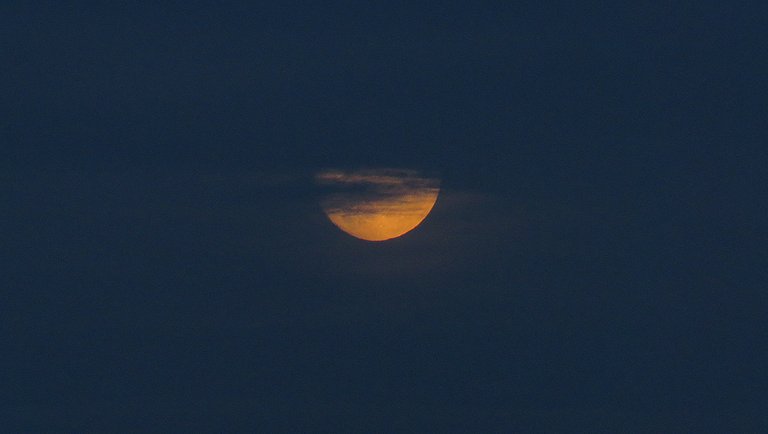
I stayed there until the moon disappeared behind the layer of clouds.
The following links will take you to the sites with more information about the insects and the cactus shown in this post. I found some stuff about them there.
https://www.researchgate.net/publication/236628794_Foraging_behavior_in_the_ant_genus_Messor
https://www.antwiki.org/wiki/Messor_wasmanni
https://www.naturespot.org.uk/species/silpha-laevigata
https://en.wikipedia.org/wiki/Opuntia_ficus-indica
https://www.mediteranka.com/index.php/en/katalog/kaktusi/item/15-opuntia-ficus-indica
AND THAT'S IT. AS ALWAYS IN THESE POSTS ON HIVE, THE PHOTOGRAPHS ARE MY WORK - THE END.
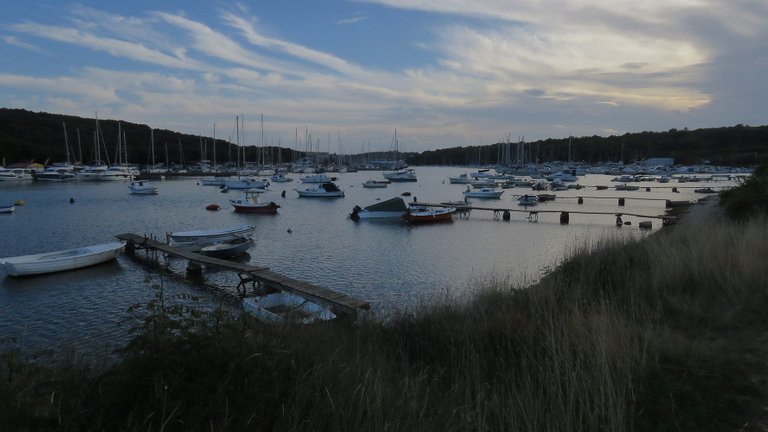
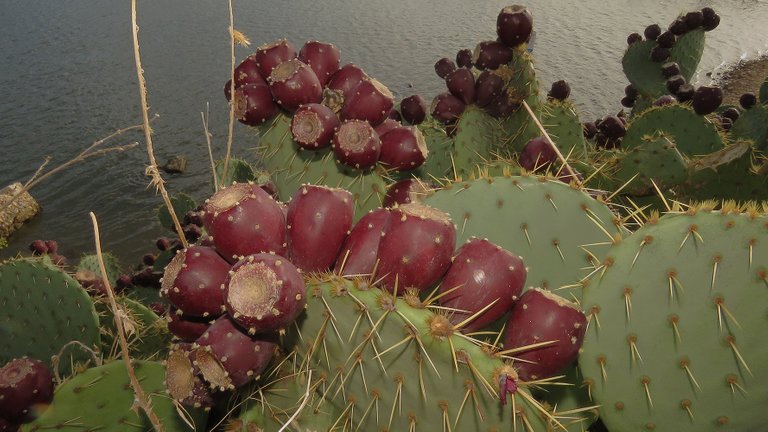
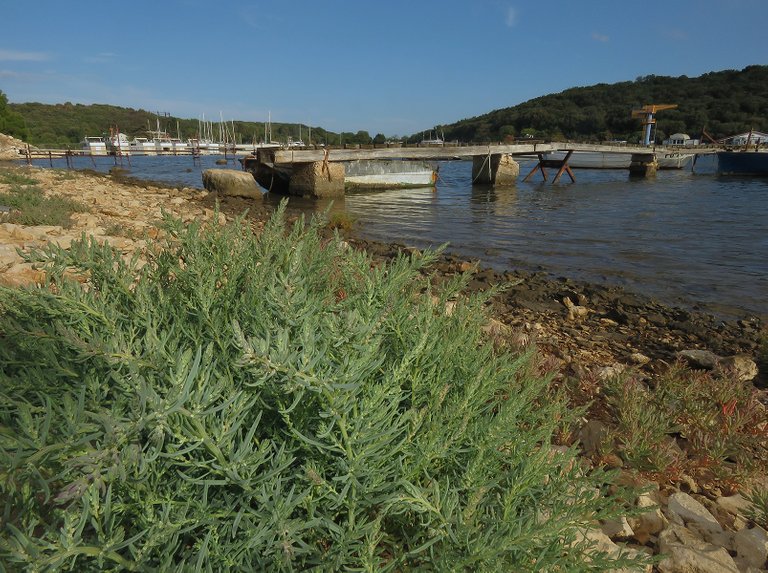

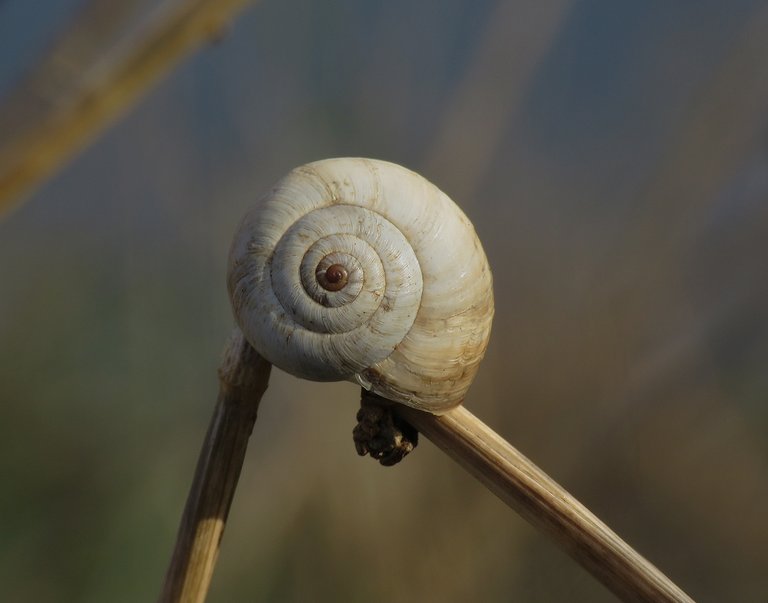

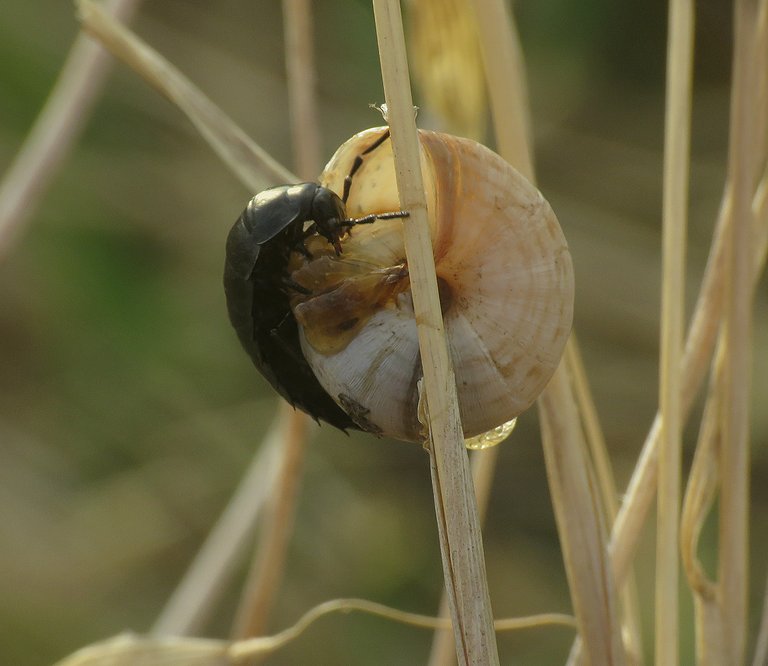

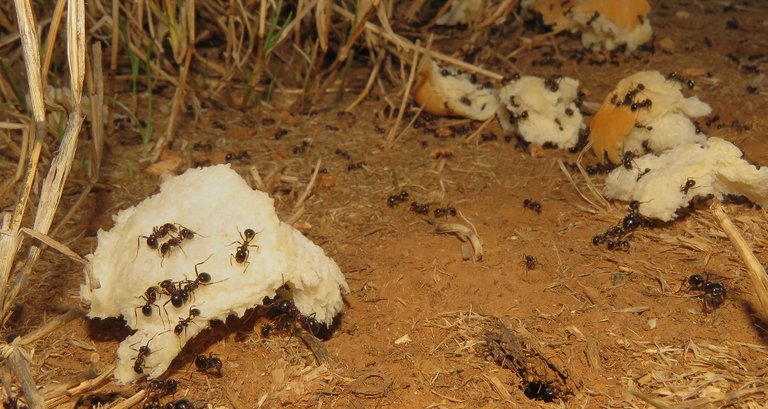
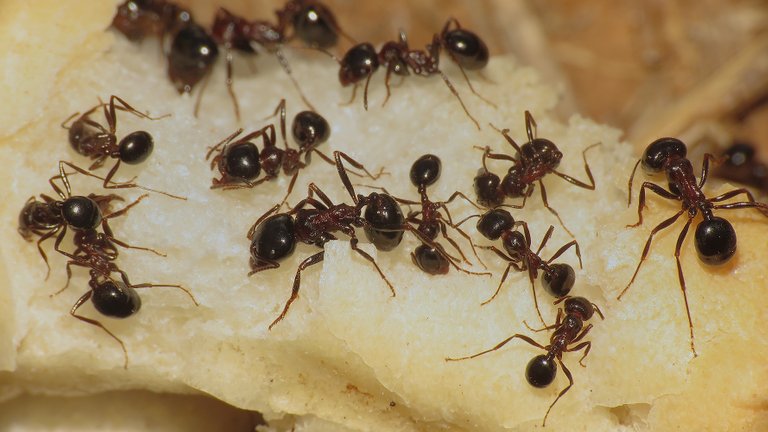
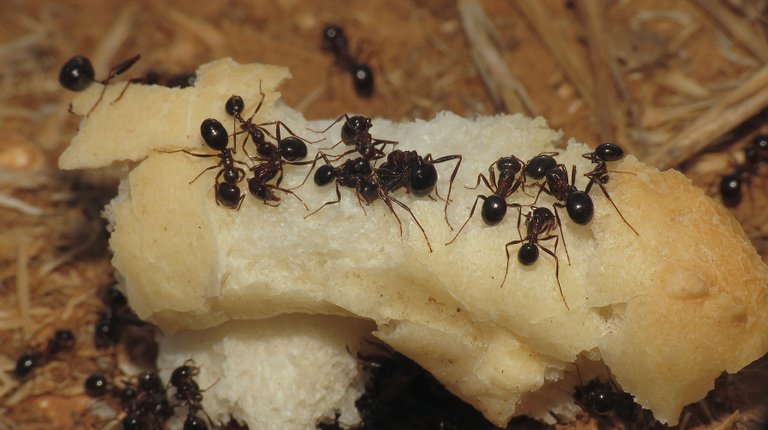
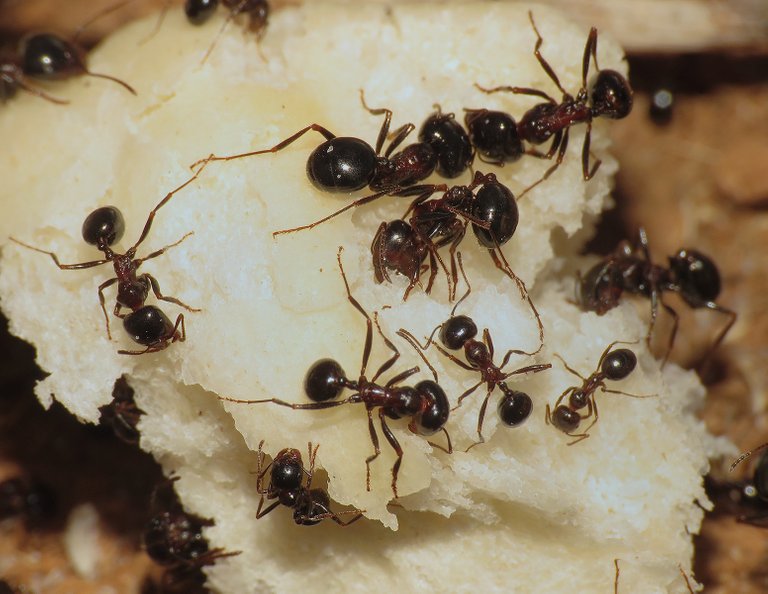
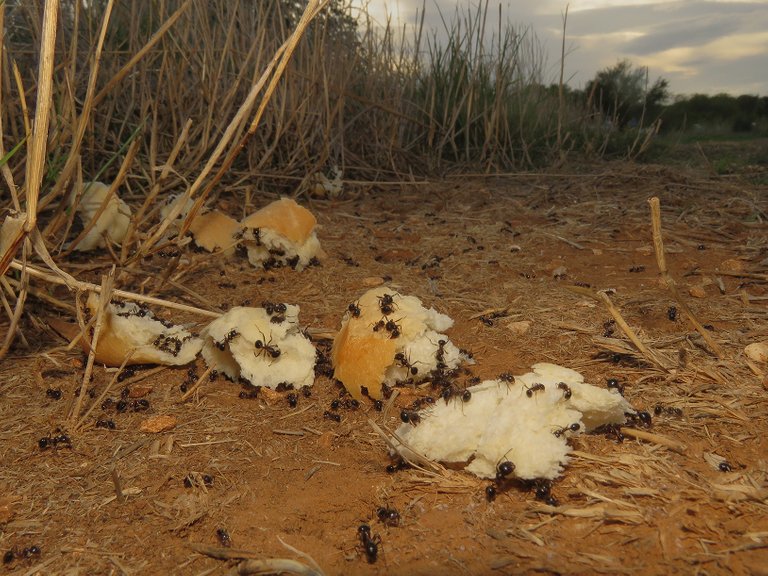
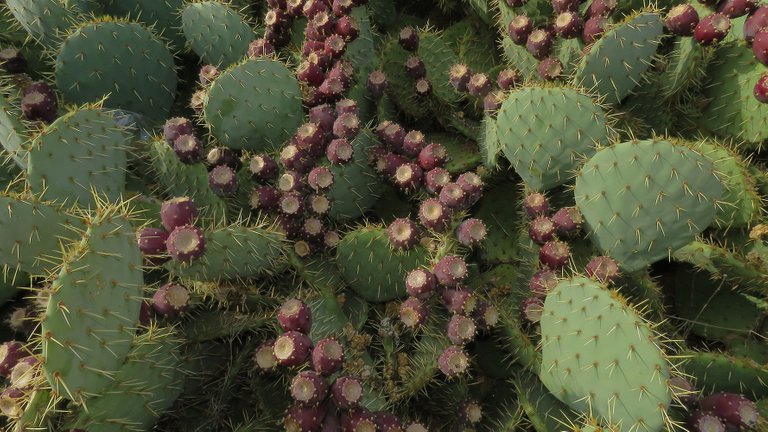


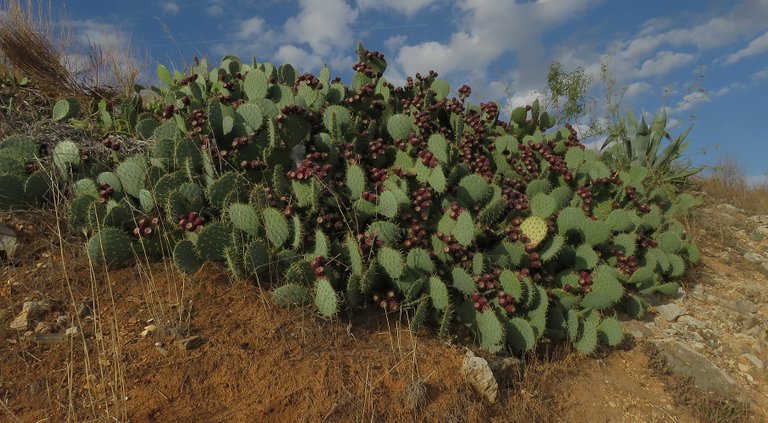


Amazing photos!
!PIZZA
!BBH
@borjan! Your Content Is Awesome so I just sent 1 $BBH (Bitcoin Backed Hive) to your account on behalf of @mariya36. (1/1)
PIZZA Holders sent $PIZZA tips in this post's comments:
@mariya36(3/5) tipped @borjan (x1)
Learn more at https://hive.pizza.
Very beautiful and nice to share
!PIZZA
!LUV
Wow cool documentation of the carrion beetle larva! And that's a nice cactus photo with the sky behind it.
Thanks. 🙂 Glad you like the post.
wow!!!
!discovery 30
This post was shared and voted inside the discord by the curators team of discovery-it
Join our community! hive-193212
Discovery-it is also a Witness, vote for us here
Delegate to us for passive income. Check our 80% fee-back Program
Your content has been voted as a part of Encouragement program. Keep up the good work!
Use Ecency daily to boost your growth on platform!
Support Ecency
Vote for new Proposal
Delegate HP and earn more
https://twitter.com/jalp21/status/1572021699016626176
The rewards earned on this comment will go directly to the people( @jlinaresp ) sharing the post on Twitter as long as they are registered with @poshtoken. Sign up at https://hiveposh.com.
Thanks for your contribution to the STEMsocial community. Feel free to join us on discord to get to know the rest of us!
Please consider delegating to the @stemsocial account (85% of the curation rewards are returned).
You may also include @stemsocial as a beneficiary of the rewards of this post to get a stronger support.
These pictures are gorgeous. I love the moon, and the pictures you took of it slowly disapearing behind the dark clouds... just marvelous!
Thanks. 🙂 Glad you like the post.
Interesting to see that larva in a shell , i do know that solitairie bees use the empty shells to lay there eggs.
The ants look pretty big compared to the ants we have here in Holland.
i do like the moon shots .
Yes, they are fairly big for ants. These Messor ants are the biggest that we have here, I think. I knew that solitary bees use shells, but I never saw it in nature. That would be a great scene to photograph.
never seen it myself but
Wow, the cacti was much in that area. With their fibrous roots in search of water, wouldn't it be hard for so much to grow in a single place?
And I haven't heard of a snail eating beetle or larvae😂. Always thought their only predators were crows.
Awesome Macro Photography as always !LOLZ 🙃
lolztoken.com
Minute Mice
Credit: reddit
@borjan, I sent you an $LOLZ on behalf of @andy4475
Are You Ready for some $FUN? Learn about LOLZ's new FUN tribe!
(3/10)